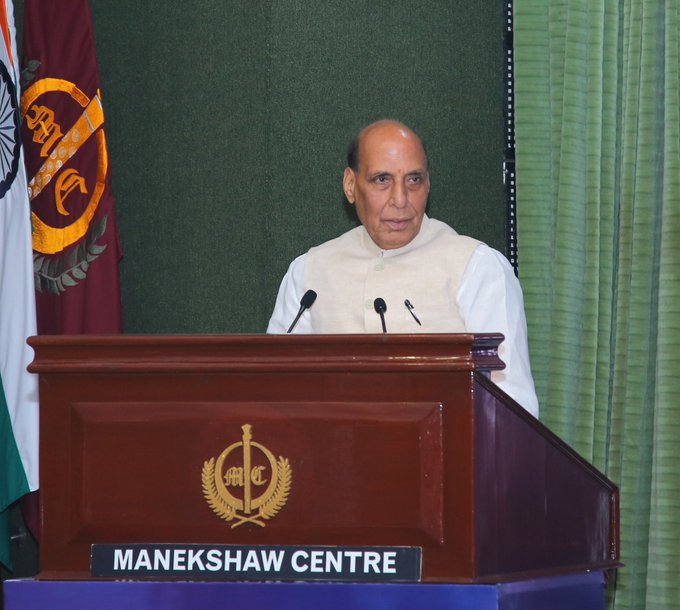India’s defence sector is undergoing a significant transformation, with the government setting an ambitious target of Rs 3 lakh crore in defence production and Rs 50,000 crore in exports by 2029. Speaking at the Defence Conclave 2025, Defence Minister Rajnath Singh announced that the country is poised to surpass Rs 1.6 lakh crore in defence production this year alone, signalling rapid progress towards self-reliance.
The push for indigenisation is supported by major reforms such as the corporatisation of the Ordnance Factory Board and the reservation of 75% of defence procurement for domestic companies. According to Singh, these moves are designed not only to reduce dependence on imports but also to position India as a global manufacturing hub for cutting-edge defence technology. He emphasised that the goal is to build “credible deterrence, not provocation” and to ensure peace through strength.
The Defence Minister reiterated that the government’s vision is to elevate India into the top ranks of military power, underpinned by indigenous innovation and a robust industrial base. Indigenous initiatives are already bearing fruit, with India exporting defence equipment to over 80 countries and expanding capabilities in areas such as fighter jet engines and missile systems.
Sanjeev Kumar, Defence Secretary (Defence Production), echoed this sentiment, urging stakeholders to adopt an “India First” approach and accelerate the adoption of technologies developed by Indian start-ups and MSMEs.
This renewed momentum aligns with India’s broader economic strategy, where defence manufacturing is not just a security imperative but also a driver of growth and global influence.
Atmanirbhar Bharat in Defence: Shaping a Self-Reliant Future
India’s Atmanirbhar Bharat initiative in defence is redefining the country’s strategic autonomy and industrial resilience. With the government determined to reduce dependence on foreign arms imports, the defence sector has seen a series of structural reforms to boost domestic manufacturing. Key steps include the corporatisation of the Ordnance Factory Board, the creation of two positive indigenisation lists, and enhanced budgetary allocations for procurement from Indian firms.
In 2023–24, India crossed ₹1.6 lakh crore in defence production, with over ₹21,000 crore worth of exports, up from just ₹1,500 crore in 2016–17. The target now stands at ₹3 lakh crore in defence production and ₹50,000 crore in exports by 2029. Indigenous platforms like the LCA Tejas, the Dhanush howitzer, Akash missile systems, and advanced electronic warfare suites have strengthened the capabilities of the armed forces while creating an ecosystem for innovation and job creation.
The launch of the Innovations for Defence Excellence (iDEX) programme and the support extended to start-ups and MSMEs are accelerating the development of advanced technologies, including drone swarms, AI-based surveillance, and autonomous systems. Defence PSUs are also entering global markets with competitive offerings.
Beyond the economic and technological gains, Atmanirbhar Bharat reflects a strategic recalibration in defence. In a world marked by geopolitical uncertainty, self-reliance enhances India’s deterrence credibility and safeguards critical supply chains.
By fusing public-sector strength with private-sector agility, India is charting a path where defence preparedness, industrial policy, and strategic independence are interlinked. The vision is clear: a future where India meets its own defence needs along with becoming a reliable global partner in security and innovation.



